West Africa is filled with exceptional places, but the Fouta Djallon is right near the top of not-to-miss wonders. Here the Guinean highlands collide with the headwaters of four major rivers. Sandstone spires climb skyward from their granite foundations, steering the water through deep canyons framed by jungle. It is as dramatic as it sounds.
We are fortunate to visit the Fouta Djallon on our two week tours from Bissau to the Highlands of Guinea. This article pulls from our first hand experience, traveler accounts, and maps and other resources from our favorite Guinea expert, Patrick Madeleine. If you want to travel on scooters with us to this special region of West Africa, have a look at our trip page.
Getting There
Guinea is not known for its road infrastructure. Despite this fact, there are roadworks going on throughout the country and many of the main roadways have seen improvements in recent years.
Most travelers, whether they are using public transport or traveling in their own vehicles, will either enter the Fouta Djallon from Mamou to the south or Koundara in the north.
Patrick Madeleine, who I will reference throughout this post, has an excellent resource on the road networks of the region. It’s particularly useful for anyone driving their own vehicle through the country. If you don’t speak French, Google Translate is your friend.
Coming From Guinea-Bissau
Most people enter from the north via Gabu in Guinea-Bissau and then Koundara. If you are traveling in a private vehicle, it would technically be possible to go from Bissau to Labé, the capital of the Fouta Djallon, in one day. It would be a long day that would include a border crossing, but it’s possible. On public transport, this is a bridge too far. You could stay the night in Gabu and then cross early the next day.
It is possible to enter Guinea from Guinea-Bissau to the south. You will need to have your own motorbike or be willing to take a mototaxi. The N3 highway runs from Gandembel to Boke, but it is certainly not a highway. It could hardly be considered a road.
There are plenty of traveler accounts from those that have taken mototaxis through this border. Here is one example from West Africa Travellers on Facebook:
Usually everyone take standard route from Bissau to Conakry via Gabu & Labe but I decided to take unusual and off road route through Quebo- Gandembel-Boke. I took big bus from Bissau (in front of hotel Libya) at 5am which cost me 4500CFA. I reached Mampata at 10:30 (there are many mampata on the way make sure you deboard the bus after Quebo) and from mampata I took moto Taxy to Gandembel border in 3000CFA (distance 24km with dirt road) at Guine border I found another moto Taxy in 3000CFA and he dropped me on the bank of a river after 13km. I crossed the river by ferry and again took moto Texy in 8000 CFA to Boke (You can get motor act at Quebo to boke in 25000 CFA too). I reached boke at 6pm because from Mampata to boke there were no road and that journey was really a nightmare. From boke I took shared Taxy in 70000 GNF and finally reached Conakry in midnight. In this route there were no immigration building. Immigration offices were in the huts. So if you are looking next level adventure then use this route.
Coming from Conakry, Mali or Côte d’Ivoire
If you are coming from Conakry or points further east, you will almost certainly pass through Mamou. I hesitate to call Mamou a glorified traffic circle, but in some ways it is just that. It is a major transport hub for the country and the spokes lead to all the major regions as well as neighboring countries.
As of this writing (April 2023), large parts of the road between Mamou and Pita are unpaved piste with stretches of roadworks and deviations. Between Pita and Labé there is 40 kilometers of road that is mostly in good shape, but with an increasing number of potholes.
A refrain you will hear throughout this post: Guinea is not easy to travel in the rainy season. Many roads are washed out and some routes are altogether impassable.
Bases to Explore the Fouta DJallon
There are three towns to consider as bases of exploration for the Fouta Djallon: Dalaba, Pita, and Labé.
Labé
Labé is the capital of the Fouta Djallon, and a good place to start your trip if you are coming from the north. Motorcycle taxis zip up and down the hilly streets; the main market, the engine of commerce in the region, is always humming; and the grande Mosque bursts through the trees and defines the skyline.
It is a charming place, where you will find plenty of smiles, and incredible views of the highlands that surround the city. It is also a great spot to organize a trip deeper into the Fouta Djallon.
For accommodation, there is one address you need to know and that’s Hotel Tata.
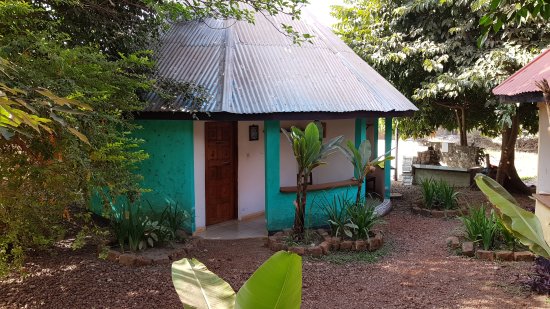
The hotel is named after the proprietor, a Guinean woman named Tata Raby. Here you will find clean and comfortable accommodation in traditional bungalows, 24-hour electricity (Labé does not have much of a power grid, but Tata has electrified the place with solar power), cold drinks at the bar, and some of the best pizza in West Africa.
Some of the best pizza in West Africa? Yep. Tata’s husband is Italian, and every year she goes to Italy during the rainy season. She has learned a few tricks on her travels. She also makes excellent jams and preserves, and perhaps our favorite chili sauce I have had in the region.
Finally, Tata collaborates with Fouta Trekking Adventure, a well reputed tour operator that does treks into the Fouta Djallon. When we were there, it was actually possible to meet with someone from Fouta Trekking on the hotel premises to arrange a trip. We did a different trek, however, with a man named Hassan Bah (read on for our writeup on Hassan).
Dalaba and Pita
We have not personally stayed in Dalaba or Pita, but many other travelers use these towns as a base for further exploration.
Patrick Madeleine has produced this useful map of his top addresses in Guinea, and it includes several good recommendations for lodging in Dalaba.
In Pita, we do not have a specific lodging recommendation, but it is easy to arrange transport from this town to specific sights (like the Kambadaga Falls mentioned below). It is also not far from Hassan Bah’s place.
What to See and Do in the Fouta Djallon
There are certain areas of West Africa where the landscapes are unchanging and the most worthwhile activity is hanging with the locals, taking in the culture and people-watching. You can still do those things in the Fouta Djallon, but they are coupled with an astonishing natural environment.
For those that enjoy hiking, swimming at waterfalls, and taking in panoramic views worthy of National Geographic, the Fouta Djallon is the destination in West Africa.
Patrick Madeleine has put together this fantastic map of sights to see and things to do in the area.
We will mention a couple of our personal favorites below.
Trekking in Doucki with Hassan Bah – deep in the Fouta Djallon
Hassan Bah is a bit of a celebrity in the Fouta Djallon. His name pops up in guidebooks, and a number of tour operators bring groups through Doucki, a small village not far from Pita.
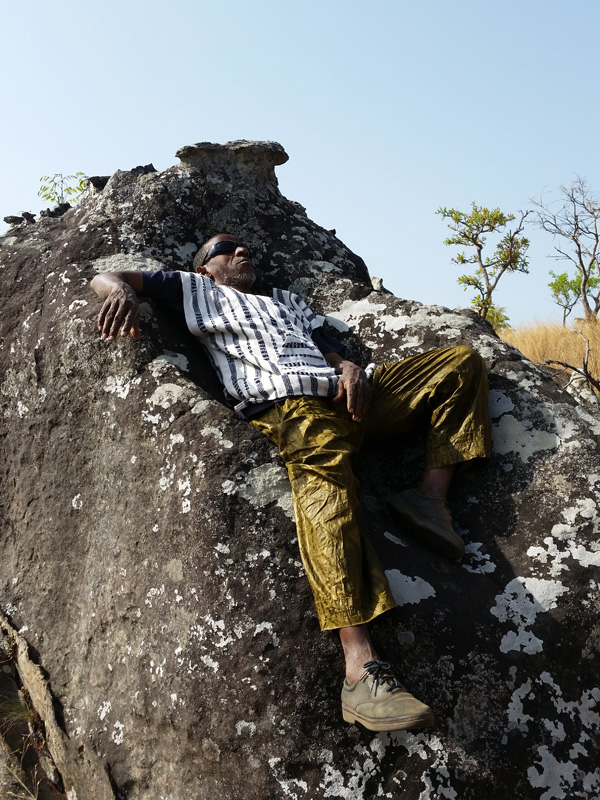
Hassan Bah relaxing on a rock
Hassan has devised a series of cleverly named treks (“Indiana Jones” and “Chutes and Ladders” are two examples) varying in difficulty and duration. The scenery and landscapes are stunning. Here is an excerpt from Grant Bridgman’s blog:
On the afternoon of our first day we went to the ‘Indiana Jones’ gorge, which is a narrow opening in the ground in which you descend into a forested wonderland of vines and roots covering sandstone boulders. Hassan nimbly displayed how we could scale rock faces using roots as ropes. There is a small, clear stream that runs through the gorge, often completely enclosed by the sandstone walls, with red-finned and green-finned minnows in it. Hassan led us to a good pool to dip ourselves in, called ‘the Jacuzzi’.
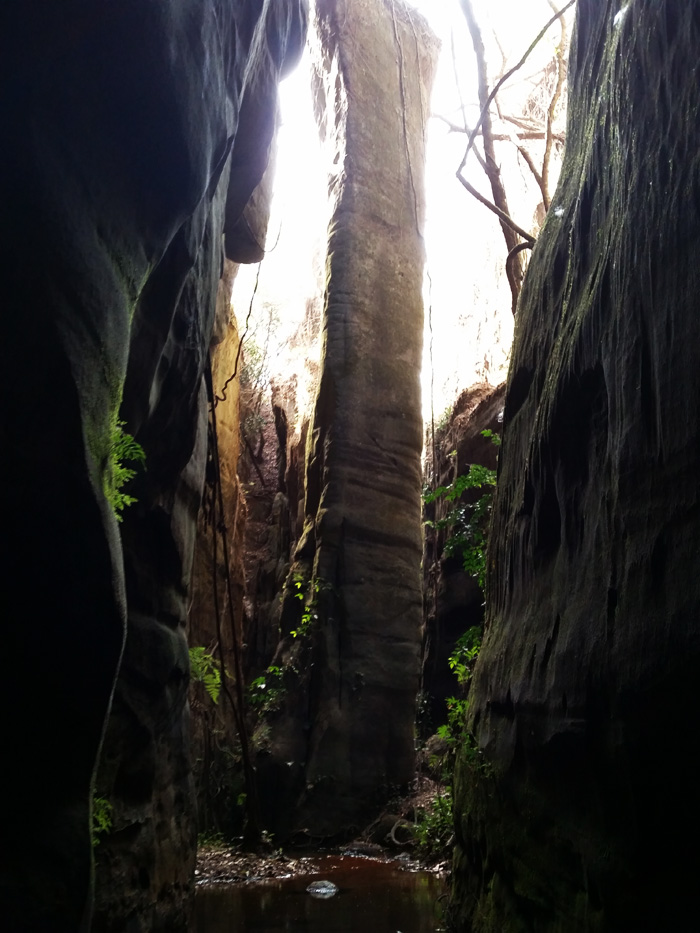
Hassan’s family compound serves as a guesthouse, and he offers full room and board along with daily treks as part of a package deal that costs 45 euros per day per person. The accommodation is basic, in traditional bungalows (watch your head on the way in!), but the grounds are well kept and Hassan’s family is lovely.
Originally born in Sierra Leone, Hassan speaks fluent English. He is an old pro at this guiding thing. In fact, he has enough tricks up his sleeve that he could probably hang up his hiking shoes and simply find work as an entertainer.
It’s also worth noting that Hassan is in his 60’s, but you would never know it. He is like a lemur in the rock canyons below Doucki. At one point, we stopped walking and Hassan, unprompted, started doing a head stand.
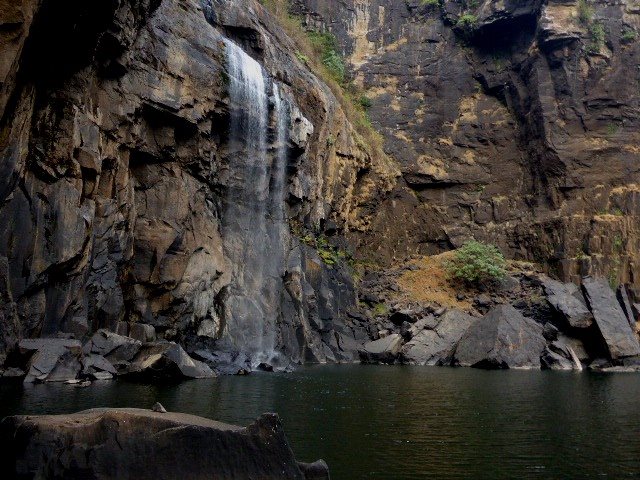
Photo from the Fouta Decouverte Facebook page.
Hassan’s brother is equally qualified to lead treks in the area, and you may end up on a hike with both of them at the same time. Whether you are with Hassan or his brother, you will be treated to some of the most incredible scenery and hospitality in West Africa. The Bah brothers know all of the families in the area, and you will be welcomed into people’s homes and given fresh fruit to sample among other things.
If you want to arrange to stay and trek with Hassan, contact him at +24462457553. Whether you are coming from Labé to the north or Pita in the south, Hassan can help you plan the best route to get there. There is no point in sugar-coating it, the roads are not good, and it is an adventure getting there.
This from Grant’s blog could be helpful:
Katie and I hired motorbikes from Pita for 60,000 franc each. We managed to find an English speaking bike rider, which was music to my non-french-speaking-ears (Osman: +24465484996).
That was in 2012, so it could be a bit more now. For reference, 60,000 francs is about $6.60 USD or about 5,50 euros.
Chutes de Kambadaga / Kambadaga Waterfalls
An iconic waterfall that needs no introduction. Not quite as majestic towards the end of the dry season when the volume dips, but there is always water.
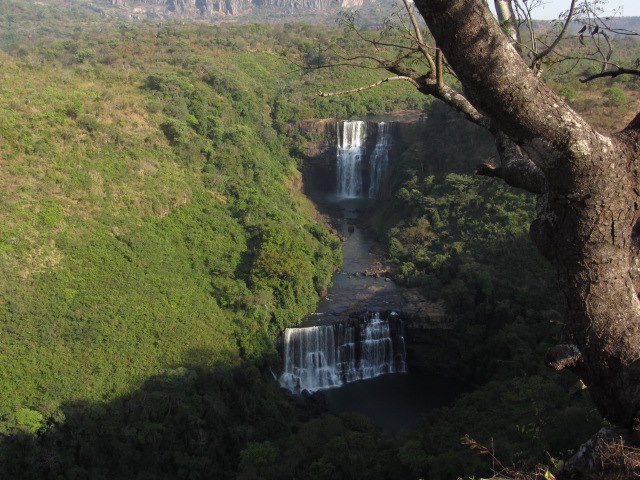
The Kambadaga waterfalls. Photo taken by Patrick Madelaine
If you are staying with Hassan you can arrange for transport to the falls. You can also do so in Pita.
A travel report from West Africa Travellers:
Kambadaga falls: about 1 hour from Pita, first 10 mins to Brouwal Tapé on paved roads, then 50-ish mins on bad road. I hired a mototaxi from Pita for about €14. Near the waterfalls, there was a guy who told us he was guide and he accompanied us to the right spots. Make sure to also descend (20 min steep downhill) to get closer to the fall!
In addition to the stunning scenery, you can also swim in the waters below the falls.
Be aware that there have been reports of extortion on the part of some locals who have asked for money to visit the falls. Hopefully the tourism board will try to tackle this problem, but in the meantime prepare to be diplomatic and possibly part with some small sum of money in order to avoid harassment.
Tips and Inspiration for Planning your Trip to the Fouta Djallon
Guinea has its challenges. In terms of tourism infrastructure, and infrastructure in general, there is not much. But the natural wonder that is the Fouta Djallon is worth overcoming occasionally rugged travel conditions.
Getting a Visa to Guinea
Guinea switched to an online visa, but it is not always as straightforward as possible. Please read our Guinea section in our guide to West African visas to get all the details. For most nationalities the visa cost is $80 USD.
When to Visit
You can visit the Fouta Djallon year-round, but the most popular time to visit is undoubtedly between November and March. During the rainy season that runs from June to October, some treks may be inaccessible and certain hotels and restaurants are closed (Hotel Tata, for example). At the same time, the rainy season offers the most verdant landscapes and the greatest volume of water for the region’s many waterfalls.
A visit at the end of the rainy season, in November, may give you the best of both worlds: lush landscapes and voluminous waterfalls without the monsoon rains.
Cash, Credit Cards and ATMS in Guinea
Guinea did not adopt the CFA franc and France subsequently sabotaged their currency, the Guinea Franc. In addition to sabotaging their currency, France also destroyed infrastructure and even burned medicines before pulling out of the country.
So yes, Guinea’s lack of development is very much tied to France’s colonial legacy.
These days, 1 euro is equal to roughly 9,500 Guinean Francs. That’s not the tricky part. This is: the largest bill is 10,000 GNF. An ATM can dispense 40 bills. So the maximum you can take out in a single transaction is roughly 40 euro.
In most cases, we recommend using ATMs in West Africa because they often offer the best exchange rates. Guinea is an exception. Plan to travel with forex, either US dollars or euros, and use your ATM card only when needed.
And unless you are staying in 5-star hotels in Conakry, you can leave your credit card at home.
Guinea Travel Info Elsewhere on the Web
If it wasn’t already clear, Patrick Madeleine is our all star Guinea guru. He has an English version of his blog here and an active Facebook page here. Patrick has some particularly good ideas about planning for a trek that would allow you to see a variety of sights in the area over the span of several days. Few people are more enthusiastic about bringing more visitors to the region.
Dan from the Road Chose Me took some incredible photos when he trekked the Fouta. Check them out here.
I wrote a bit more extensively about our trip through the Fouta on my personal blog, where I talk about our stay with Hassan and the trek that we went on.
If you have visited this incredible corner of Guinea, please let us know in the comments below.
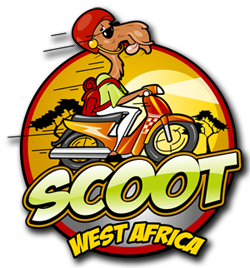
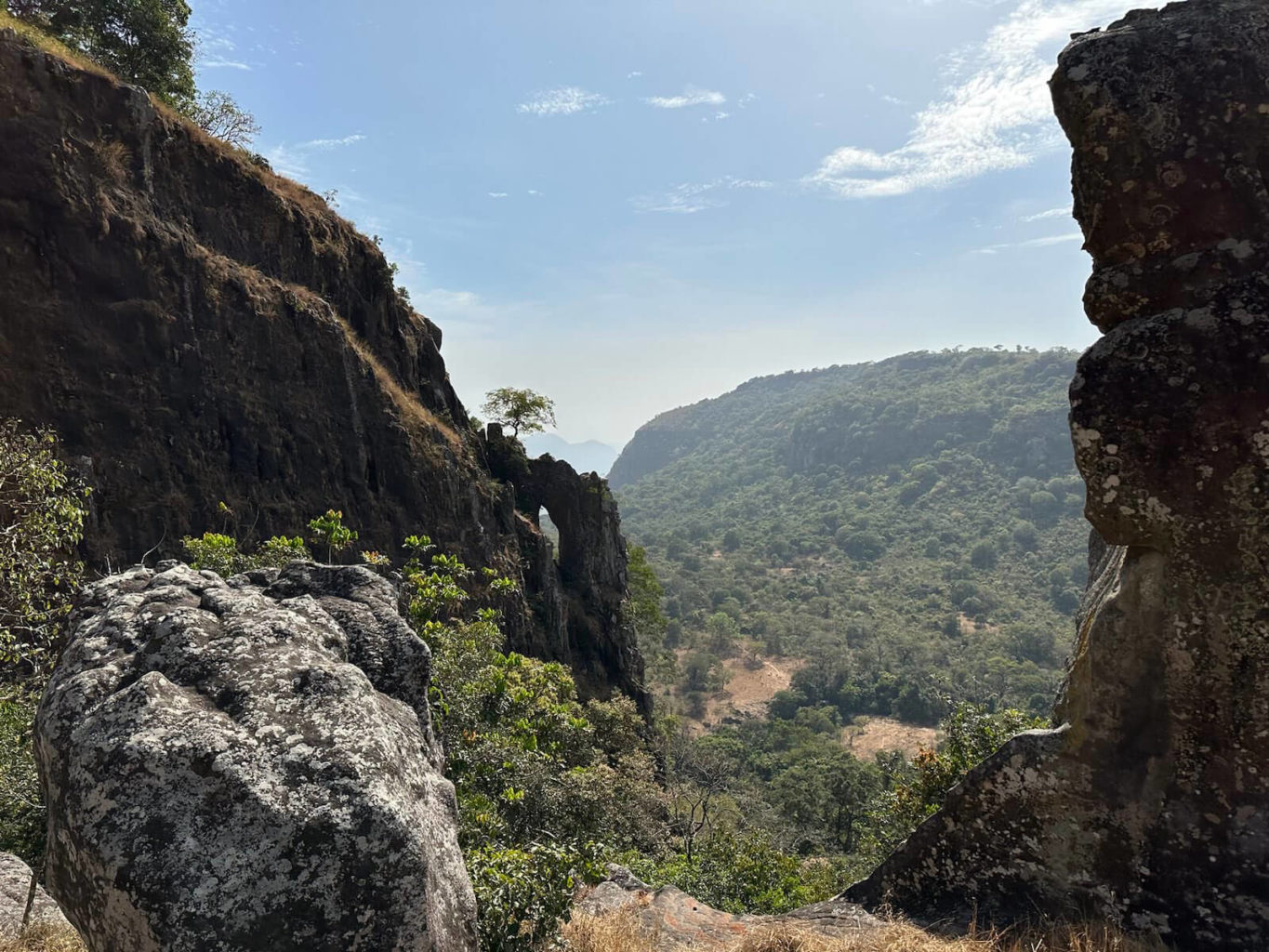
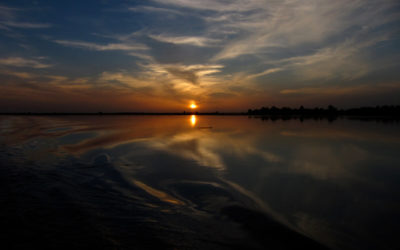
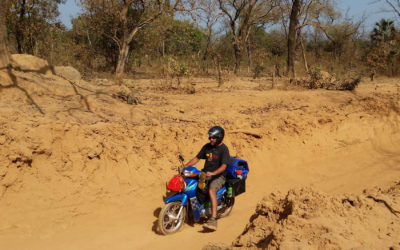
0 Comments